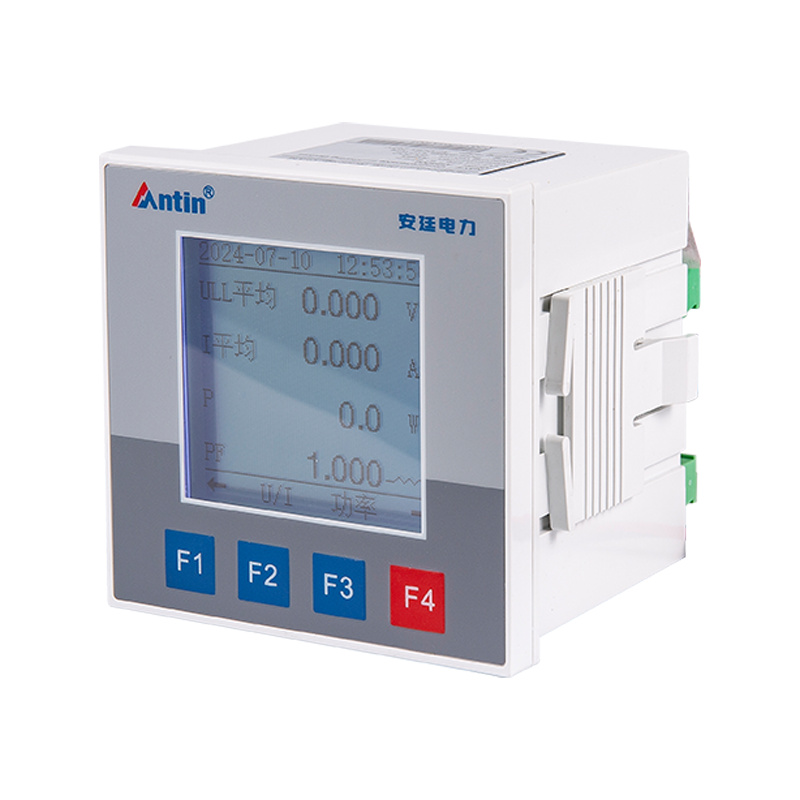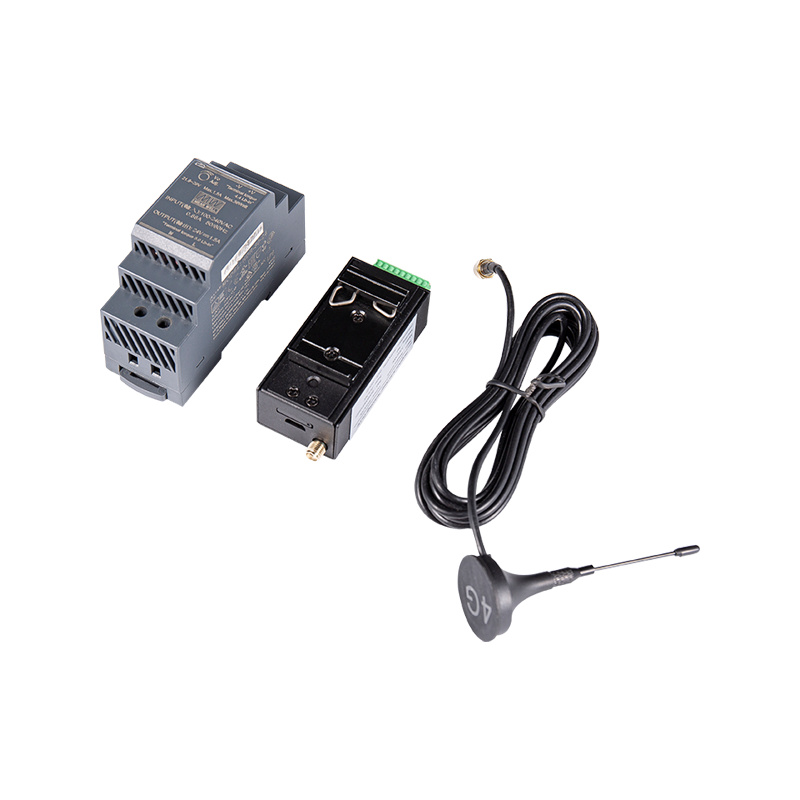Top Features to Look for in a Modern Multifunction Meter
Why Modern Multifunction Meters Are Essential for Precision Measurement
In today's complex industrial and residential environments, the demand for accurate and versatile measurement tools has never been higher. Modern multifunction meters have evolved from simple measuring devices to sophisticated instruments capable of monitoring multiple parameters simultaneously. These advanced devices play a crucial role in energy management, equipment maintenance, and operational efficiency across various sectors. Understanding the key features that distinguish high-quality multifunction meters is essential for making informed purchasing decisions that will serve your needs for years to come.
Key Capabilities of Advanced Multifunction Meters
High-Accuracy Power Quality Analysis
One of the most critical aspects of a modern multifunction meter is its ability to perform comprehensive power quality analysis. This functionality goes beyond basic voltage and current measurements to provide detailed insights into the health and efficiency of electrical systems. multifunction meter for power quality analysis represents a specialized application where these devices truly excel, offering capabilities that simpler meters cannot match.
Advanced multifunction meters with power quality analysis capabilities typically include:
- Harmonic distortion measurement up to the 50th order or higher
- Transient voltage detection and recording
- Voltage sag and swell monitoring with precise timestamps
- Power factor measurement across multiple phases
- Flicker measurement according to international standards
When comparing basic multifunction meters to those with advanced power quality analysis capabilities, several key differences become apparent:
| Feature | Basic Multifunction Meter | Advanced Power Quality Meter |
|---|---|---|
| Harmonic Analysis | Basic THD measurement only | Individual harmonic components up to 50th order |
| Data Logging | Simple interval recording | High-speed sampling with event triggers |
| Standard Compliance | May not meet specific standards | Compliant with IEC 61000-4-30 Class A or similar |
| Waveform Capture | Not available | Detailed waveform recording for disturbances |
Implementation Considerations for Power Quality Monitoring
Implementing a multifunction meter with comprehensive power quality capabilities requires careful consideration of several factors. The installation environment must be assessed for potential electromagnetic interference that could affect measurement accuracy. Additionally, the meter's sampling rate and bandwidth must align with the types of power quality issues common in your specific application. For facilities with sensitive electronic equipment or those subject to strict regulatory requirements, investing in a meter with advanced power quality analysis features becomes not just beneficial but essential for maintaining operational continuity and compliance.
Advanced Energy Consumption Monitoring
Modern energy management demands precise tracking of consumption patterns across different time intervals and operational conditions. energy monitoring with multifunction power meter has become increasingly important as organizations seek to optimize their energy usage, reduce costs, and meet sustainability targets. These advanced meters provide detailed insights that go far beyond simple kilowatt-hour tracking.
Sophisticated energy monitoring capabilities in multifunction meters include:
- Real-time and historical energy consumption data
- Demand measurement with predictive capabilities
- Cost allocation based on tariff structures
- Sub-metering capabilities for specific circuits or equipment
- Energy quality indicators that relate consumption to power factors
The difference between basic energy monitoring and advanced energy monitoring with multifunction power meters is substantial, as shown in the following comparison:
| Monitoring Aspect | Basic Energy Meter | Advanced Multifunction Power Meter |
|---|---|---|
| Data Granularity | Monthly or daily totals | Sub-hourly intervals with trending |
| Demand Tracking | Basic maximum demand | Sliding window demand with forecasting |
| Cost Analysis | Simple rate application | Complex tariff structures with time-of-use |
| Reporting | Basic consumption data | Comprehensive energy performance indicators |
Strategic Benefits of Comprehensive Energy Monitoring
Implementing advanced energy monitoring with multifunction power meters delivers significant strategic advantages beyond simple cost tracking. Organizations can identify energy waste patterns, optimize equipment operation schedules, and verify the effectiveness of energy efficiency measures. The data collected enables informed decision-making regarding equipment replacement, operational changes, and capital investments in energy-saving technologies. Furthermore, detailed energy monitoring supports sustainability reporting and compliance with increasingly stringent environmental regulations, making it an essential component of modern corporate responsibility initiatives.
Industrial-Grade Durability and Environmental Protection
The operating environment significantly impacts the performance and longevity of measurement instruments. industrial grade multifunction electrical meter devices are specifically engineered to withstand harsh conditions while maintaining measurement accuracy and reliability. These robust meters are essential for applications in manufacturing facilities, utility substations, water treatment plants, and other challenging environments where standard meters would quickly fail.
Key durability features of industrial-grade multifunction meters include:
- Enhanced ingress protection ratings (typically IP65 or higher)
- Wide operating temperature ranges (-40°C to 70°C or broader)
- Resistance to vibration, shock, and electromagnetic interference
- Corrosion-resistant materials and protective coatings
- Extended operational lifespan under continuous use
Comparing standard commercial meters with industrial-grade multifunction electrical meters reveals significant differences in construction and capability:
| Durability Factor | Commercial Grade Meter | Industrial Grade Multifunction Meter |
|---|---|---|
| Operating Temperature | 0°C to 50°C typical | -40°C to 70°C or wider range |
| Ingress Protection | IP40 or similar for indoor use | IP65 or higher for harsh environments |
| Vibration Resistance | Limited to office environments | Meets industrial vibration standards |
| EMC Immunity | Basic residential standards | Enhanced for industrial electromagnetic noise |
Application-Specific Durability Requirements
Selecting the appropriate industrial grade multifunction electrical meter requires careful assessment of the specific environmental challenges in your application. Facilities with high levels of conductive dust, such as woodworking or metal processing plants, need meters with superior sealing capabilities. Locations subject to extreme temperature fluctuations, like outdoor substations or refrigerated warehouses, require meters with wide operating temperature ranges and stable performance across those ranges. Understanding these application-specific requirements ensures that the selected meter will provide reliable service throughout its expected lifespan, reducing maintenance costs and preventing unexpected downtime due to instrument failure.
Smart Grid and IoT Communication Capabilities
The integration of measurement devices into larger monitoring and control systems has become a critical requirement in modern infrastructure. smart grid compatible multifunction energy meter devices offer communication protocols and data formats that enable seamless integration with energy management systems, SCADA platforms, and IoT networks. This connectivity transforms standalone measurement devices into intelligent nodes in a comprehensive monitoring ecosystem.
Essential communication features for smart grid compatible multifunction energy meters include:
- Standardized communication protocols (Modbus, DNP3, IEC 61850)
- Ethernet, cellular, and wireless connectivity options
- Cybersecurity features to prevent unauthorized access
- Data compression and efficient transmission algorithms
- Time synchronization capabilities for coordinated measurements
The communication capabilities of traditional meters compared to smart grid compatible multifunction energy meters differ significantly:
| Communication Aspect | Traditional Meter | Smart Grid Compatible Meter |
|---|---|---|
| Protocol Support | Basic serial communication | Multiple standard protocols simultaneously |
| Data Accessibility | Local display only | Remote access via multiple channels |
| Integration Capability | Limited to simple systems | Seamless integration with complex EMS/SCADA |
| Future-Proofing | Fixed functionality | Firmware upgradable for new features |
Implementation Strategies for Smart Grid Integration
Successfully implementing smart grid compatible multifunction energy meters requires careful planning beyond the selection of appropriate communication protocols. Organizations must consider data management strategies to handle the increased volume of information generated by these connected devices. Cybersecurity measures must be implemented to protect against unauthorized access and potential manipulation of measurement data. Additionally, interoperability testing with existing systems ensures that the meters will function as intended within the broader operational technology ecosystem. These considerations are essential for maximizing the value of investment in smart grid compatible measurement infrastructure.
Three-Phase Power Measurement Accuracy
In commercial and industrial settings, three-phase power systems predominate, requiring specialized measurement capabilities. three phase power multifunction meter devices are specifically designed to accurately measure balanced and unbalanced loads across all phases simultaneously. This capability is essential for proper load management, equipment protection, and accurate billing in three-phase applications.
Critical features of high-accuracy three phase power multifunction meters include:
- Simultaneous measurement of all phase parameters
- Detection and measurement of phase unbalance
- Neutral current monitoring in four-wire systems
- Phase sequence detection and reversal alarms
- Individual phase energy registration
The measurement capabilities of single-phase meters adapted for three-phase applications compared to dedicated three phase power multifunction meters show notable differences:
| Measurement Parameter | Adapted Single-Phase Meters | Dedicated Three-Phase Multifunction Meter |
|---|---|---|
| Unbalance Measurement | Calculated from sequential readings | Direct simultaneous measurement |
| Phase Angle Accuracy | Limited by non-simultaneous sampling | High accuracy with synchronized sampling |
| Harmonic Analysis | Per phase with time skew | All phases simultaneously correlated |
| Neutral Current | Derived calculation | Direct measurement with dedicated input |
Applications Requiring Precise Three-Phase Measurement
Dedicated three phase power multifunction meters are essential in applications where load balance, power quality, and accurate energy measurement are critical. Motor control centers benefit from precise phase unbalance monitoring, which can prevent expensive motor failures. Data centers require accurate measurement of power quality across all phases to ensure uptime of sensitive computing equipment. Manufacturing facilities with variable loads need comprehensive three-phase monitoring to optimize energy usage and identify potential problems before they cause production interruptions. In each of these applications, the investment in a proper three-phase multifunction meter delivers returns through improved operational efficiency, reduced equipment downtime, and more accurate energy cost allocation.
Selecting the Right Multifunction Meter for Your Specific Needs
Choosing the appropriate multifunction meter requires careful consideration of your current and future measurement requirements. The ideal meter should not only address your immediate needs but also provide capabilities that will remain relevant as your operations evolve. By understanding the advanced features available in modern multifunction meters, you can make an informed decision that balances performance, durability, connectivity, and cost to deliver long-term value for your specific application.
When evaluating potential multifunction meters, consider creating a requirements matrix that weights the importance of each feature category based on your specific application. This structured approach ensures that you select a meter that provides the necessary capabilities without paying for features that won't be utilized. Remember that the most expensive meter isn't necessarily the best choice—the optimal selection is the one that most closely matches your specific operational requirements and provides reliable, accurate data to support your decision-making processes.






